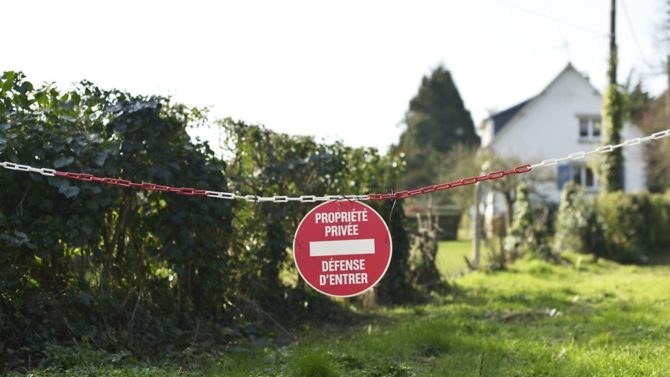Get off my land: challenging a right of way over a French property

Is there an historic right of way across your French property? Don’t despair as there may be a way to protect your privacy, reveals solicitor Sean O’Connor
Let me share a French right-of-way scenario with you. Imagine you bought a French property in 1999. The title deed did not say anything about a right of way. But in 1974 a right of way had been created across your front lawn and straight past your front door.
Now, years later, the owner of the large empty plot further up suddenly announces she wants to build six houses on it and run a driveway for cars along the alleged right of way across your property.
First question: can you use the argument that you were not told about the right of way? Answer: no. You could sue your notaire (lawyer) for financial compensation, but a right is a right, whether you knew about it or not. Moreover if your notaire had studied the Land Registry entries, the right of way would have shown up. Well then, have you any defence? Let us go into this matter in further detail.
The non-usage loophole
In French law, a servitude is an obligation affecting land. It can be ‘continuous’ or ‘discontinuous’. A servitude is continuous if no act of man is needed in order to exercise it – for example water pipes, drains. A discontinuous servitude needs an act of man; for example a right of way or a right to draw water from a well. Furthermore a servitude can be ‘apparent’, for example a door or a window, or ‘non-apparent’; for example, a prohibition against construction, or against building above a specified height.
A discontinuous servitude, such as a right of way, whether apparent or non-apparent, can only be created by a title deed. It can not be established merely by proving it has been in use for a long time. Article 706 of the French Civil Code says that a servitude is extinguished if it has not been used for 30 years. And Article 707 says that, in the case of a discontinuous servitude, the 30 years start from the day when the person entitled to use the right stops using it.
We have seen above that the title deed establishing the servitude here considered was signed up in 1974, so let us say 45 years ago. Until now, at least so we initially thought, the servitude has never been used or claimed. Hooray, we have a defence: servitude extinguished under Article 706. But now comes a spanner in our works. The lady owning the uphill adjoining plot produces a local witness who says that during the 1990s and up until some time in 1999 – shortly before your land was bought – he would ride his horse along the disputed route in order to graze his horse on our neighbour’s adjoining land. That was less than 30 years ago. Has our case collapsed? Are we going to see that driveway directly outside our front door?
_________________________________________________________________
Don’t miss
How to avoid a boundary dispute with your new French neighbours
Protect your property from fraud
_________________________________________________________________
The horses-only loophole
I have done some research on the internet and found an ancient, dusty and very learned tome published in 1843. It emerges that Article 706 is very old. It featured in the original Civil Code promulgated by Napoleon in 1805. That of itself is interesting. Most of the Code has been rewritten since then. Indeed, so hectic is the pace of modern life that large swathes of the Code have been rewritten since the year 2000. But I digress. It emerges that if you establish use of a horse within the 30 years but not any other use, the result is that all other uses are out of time. Yes, you can go on using a horse, but nothing else. So the vehicular driveway for cars cannot now be constructed. Chère Madame loses her case!
The ‘proportionate means’ loophole
However Madame has another argument up her sleeve. She argues that her plot is ‘enclaved’ meaning that it is cut off from the road, and that therefore she must be granted, under Article 682 of the Civil Code, a right of way over your land in order to gain access to the public road. Now it so happens that the other side of her plot directly adjoins the public road but we are in very hilly terrain and Madame says that this does not enable her to have access because there is a 2m-high wall of rock along the border between her plot and the road.
The response to that is that access is available if it can be achieved with proportionate and reasonable use of modern technology such as two hours with a bulldozer. If disproportionate means were needed, for example building a tunnel, then the argument that access is geographically not reasonably possible would hold. In the present case, however, two hours with a bulldozer would suffice. So once again, Madame loses her case. We can continue to enjoy our afternoon tea on the front lawn under the canopy together with our cucumber sandwiches and a slice of delicious chocolate cake.
Sean O’Connor is a French property law specialist and member of the Institute of Translation and Interpreting
Share to: Facebook Twitter LinkedIn Email


